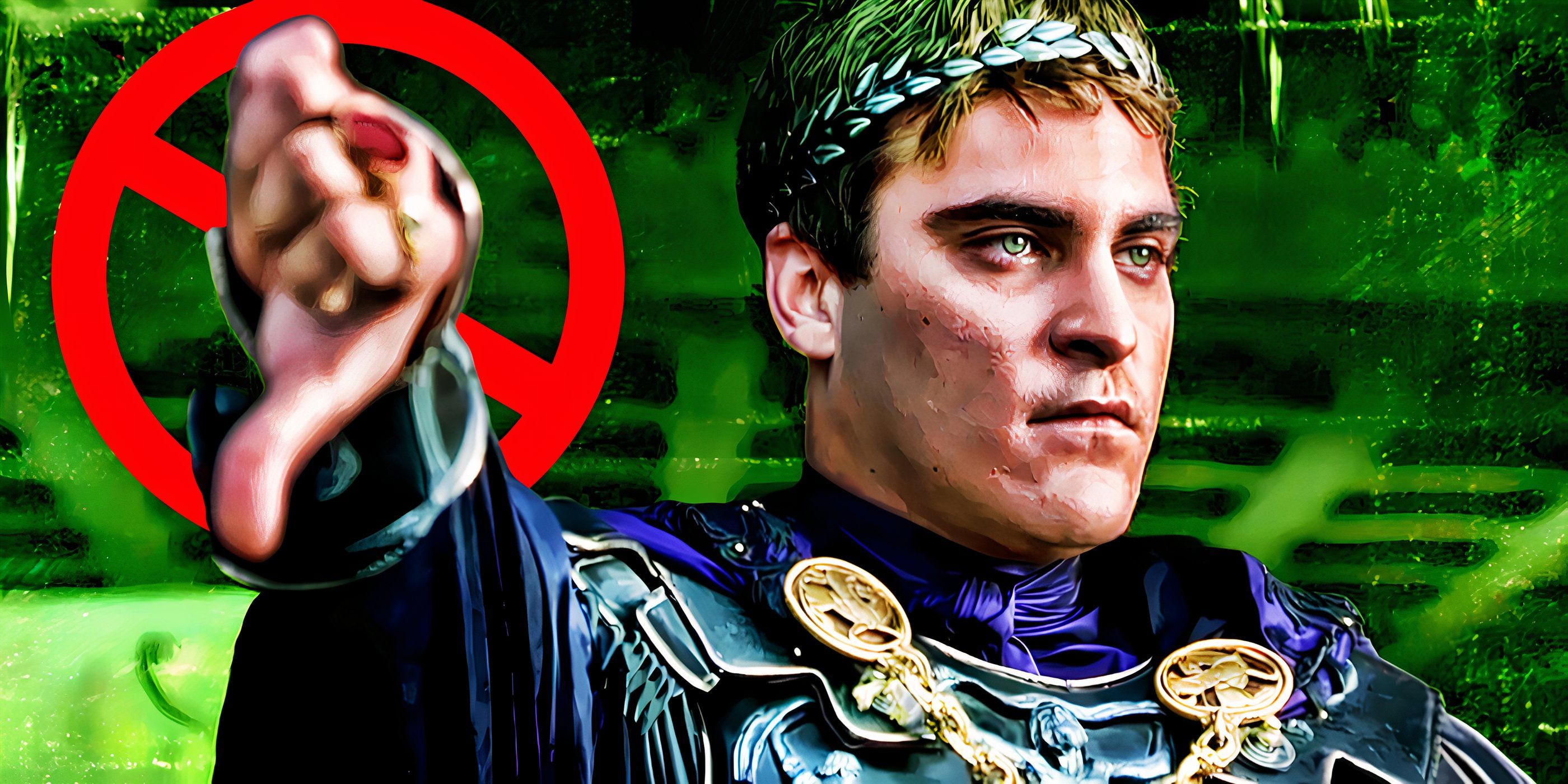
With an 80% Tomatometer on Rotten Tomatoes, Gladiator is a well-loved film and has many fantastic qualities. However, the movie is not the most historically accurate for many reasons; Maximus is not a real general, Christianity came much later than the film portrays, and heavy weapons such as dart launchers and catapults were not as portable as depicted. Gladiator changed many things from Roman history for the movie, dramatizing and even fictionalizing elements to tell its story. In fact, despite being one of the most iconic images in Gladiator, Commodus’ thumbs-down gesture does not follow history at all.
Gladiator Gets The Emperor’s Thumbs Down Gesture Totally Wrong
Phoenix’s Gesture Is Not Historically Accurate










In Gladiator, the emperor’s thumbs-down gesture is wrong, and the movie moment does not follow real-world history. “Pollice verso” means “with a turned thumb” in Latin and refers to a hand gesture used to pass judgment in the gladiatorial arena about the fate of the defeated combatant. The thumb gesture has been debated by scholars, however, classical studies professor Anthony Corbeill determined that the thumbs-up gesture signaled for the gladiator to be killed, while a closed fist spared them. Therefore, the gesture was aimed at the victorious gladiator as an answer to the fate of the fallen.
The popular misconception of the pollice verso hand gesture possibly originated from the 1872 Jean-Léon Gérôme painting “Pollice Verso,” which depicted a crowd using a thumbs-down gesture to signify the death of the defeated gladiator.
However, Gladiator changed the gesture, as Commodus used a thumbs up to signal for the fallen gladiator to be spared, and a thumbs down for them to be killed. When Maximus and Commodus reunite for the first time since Maximus’ family was killed, the crowd convinces the emperor to let the gladiator live with a thumbs up. In Maximus’ second gladiatorial victory, he defies Commodus’ thumbs down and spares the fallen gladiator’s life. The gesture is important to Gladiator’s iconography because it represents the rivalry between Maximus and Commodus, though its inaccuracy may annoy some people with a Gladiator rewatch.
Why Joaquin Phoenix’s Move In Gladiator Still Works
The Gesture Makes Sense In Gladiator

Despite Gladiator’s historically inaccurate thumb gesture, Joaquin Phoenix’s move still works in the context of the movie and was arguably better. Ridley Scott was apparently aware of the inaccuracy, but felt a redefined gesture would help those without deep historical knowledge of the Roman period and all its intricacies, as they would be able to understand the gesture in Gladiator due to its simplicity. Thumbs-up is a universally recognized good sign, and so the emperor uses it to signify the gladiator should live. Therefore, the gesture makes sense in Gladiator as it enables viewers to easily identify Commodus’ intentions.
Furthermore, the thumbs-down gesture made for a dramatic moment in Gladiator as it showed ultimate disapproval. Commodus and Maximus deeply dislike each other in Gladiator and their rivalry and plotting drives the film. Commodus challenging Maximus’ morals by asking him to kill a fallen gladiator creates a dramatic moment in the movie, especially as Maximus defies him. Ultimately, the gesture or other historical inaccuracies did not affect the film in the long run, as Gladiator broke records in 2000 with its Best Picture win, and some may argue that Phoenix’s iconic thumbs-down moment helped the movie’s iconic status.
How Joaquin Phoenix’s Signature Move Comes Into Play In Gladiator 2
Commodus’ Thumbs Down Gesture Is Used Again

Joaquin Phoenix’s signature move is repeated in Gladiator II’s trailer, showing it remains a huge part of Gladiator’s iconography. Gladiator II was officially announced in 2018, with Ridley Scott returning to direct the historical epic sequel film. Following Commodus’ death in the first film, the sequel focuses on Commodus’ nephew, Lucius Verus (Paul Mescal), as he battles in the gladiator arena for co-emperors Geta and Caracalla (Joseph Quinn and Fred Hechinger). In the trailer, Geta uses a thumbs-down gesture like Joaquin Phoenix’s emperor character in the original Gladiator, showing that the franchise has stuck with Gladiator’s historically inaccurate decision.




